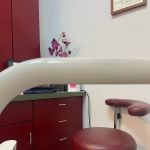How Often Should You Get a Professional Dental Cleaning?
- 1. Why Professional Dental Cleaning Is Important
- 2. How Often Should You Get a Professional Dental Cleaning?
- 3. Benefits of Regular Professional Dental Cleanings
- 4. Factors That Impact the Frequency of Cleanings
- 5. How to Maintain Good Oral Hygiene Between Cleanings
- 6. Real-Life Cases: How Regular Dental Cleanings Improve Health
1. Why Professional Dental Cleaning Is Important
Regular dental cleanings are a cornerstone of good oral health. They involve a comprehensive process where dental hygienists use professional tools to remove plaque, tartar, and stains from your teeth. While brushing and flossing at home are essential for maintaining daily oral hygiene, professional cleaning reaches areas that regular brushing cannot, such as below the gum line and between teeth.
By scheduling routine dental cleanings, you reduce the risk of cavities, gum disease, and even bad breath. Professional cleanings not only help maintain your smile but also ensure the early detection of any underlying oral health issues.
2. How Often Should You Get a Professional Dental Cleaning?
The ideal frequency for professional dental cleanings varies from person to person, depending on several factors. However, the general recommendation is every six months. Most people can maintain a healthy smile with cleanings twice a year, ensuring that their teeth and gums are in optimal condition.
Why Six-Month Cleanings Are Ideal
Six-month intervals between cleanings are recommended because this schedule allows dental professionals to monitor your oral health regularly. It helps in preventing plaque buildup and catching any issues, such as cavities or gum disease, before they become more severe. Additionally, this timing supports healthy oral hygiene habits and keeps you on track with preventive care.
When More Frequent Cleanings Are Necessary
Some individuals may need professional cleanings more frequently than every six months. For example, people who have a history of gum disease, smokers, or those who have medical conditions affecting their immune system may require cleanings every three to four months. These more frequent visits ensure that plaque buildup is kept under control and the risk of complications is minimized.
3. Benefits of Regular Professional Dental Cleanings
Regular professional dental cleanings provide a wide array of benefits for your overall oral health. These include:
1. Prevention of Gum Disease
Professional cleanings help remove plaque and tartar, which can cause gum inflammation and lead to periodontal disease. Regular visits allow your dentist or hygienist to identify early signs of gum disease and take steps to prevent its progression.
2. Reducing the Risk of Cavities
While regular brushing helps remove food particles and plaque, only a professional cleaning can remove the hardened plaque (tartar) that forms at the base of your teeth. This buildup can contribute to tooth decay and cavities, making regular cleanings an essential part of cavity prevention.
3. Fresher Breath
Dental cleanings also help combat bad breath (halitosis) caused by plaque, tartar, and food particles that become trapped in your mouth. A thorough cleaning removes these sources of bacteria and leaves your mouth feeling fresh.
4. Improved Appearance
Over time, plaque and tartar buildup can lead to yellow or discolored teeth. A professional cleaning will brighten your smile by removing these stains, providing a cleaner and healthier-looking appearance.
4. Factors That Impact the Frequency of Cleanings
Although the general recommendation is to have professional dental cleanings every six months, several factors can influence how often you should visit the dentist:
1. Your Oral Health History
If you have a history of gum disease or other oral health problems, more frequent visits may be necessary. Your dentist will be able to tailor the frequency of cleanings to help maintain optimal oral health and avoid further complications.
2. Lifestyle Factors
Smoking, alcohol consumption, and a high-sugar diet can contribute to plaque buildup and increase the risk of oral diseases. These habits might require more frequent cleanings to keep your teeth and gums healthy.
3. Age
As we age, our teeth may become more prone to decay and gum disease. Seniors may benefit from more frequent cleanings due to the natural changes in the mouth that come with aging.
4. Other Health Conditions
Certain health conditions, such as diabetes, can increase the risk of gum disease and other oral health problems. If you have a chronic condition, your dentist may recommend more frequent cleanings to ensure your oral health remains under control.
5. How to Maintain Good Oral Hygiene Between Cleanings
Between professional cleanings, maintaining good oral hygiene at home is essential for preserving your smile and overall dental health. Here are some effective strategies:
1. Brush Regularly and Properly
Brush your teeth at least twice a day with fluoride toothpaste. Use a soft-bristled toothbrush and focus on brushing for at least two minutes to ensure all surfaces of your teeth are cleaned thoroughly.
2. Floss Daily
Flossing helps remove food particles and plaque from between your teeth, areas where your toothbrush might miss. Make sure to floss once a day to keep your gums healthy and prevent cavities between your teeth.
3. Use Mouthwash
Incorporate an antibacterial mouthwash into your daily routine to reduce plaque buildup and kill bacteria that can contribute to bad breath and gum disease.
4. Eat a Healthy Diet
A diet rich in fruits, vegetables, and calcium-rich foods will help promote strong teeth and gums. Limit sugary foods and drinks that can contribute to plaque buildup and cavities.
6. Real-Life Cases: How Regular Dental Cleanings Improve Health
Many people have experienced significant improvements in their oral health thanks to regular professional dental cleanings. Here are a couple of real-life stories:
1. Sarah’s Journey to Healthier Gums
Sarah, a 35-year-old woman, struggled with gum disease for several years due to inconsistent dental cleanings. After committing to biannual cleanings, she noticed a significant improvement in her gum health. Her dentist used the cleanings as an opportunity to remove plaque buildup and catch early signs of gum disease, ultimately preventing tooth loss.
2. Mark’s Success in Preventing Cavities
Mark, a 42-year-old man with a history of cavities, began visiting the dentist every six months for cleanings. After just one year, he noticed a reduction in the number of cavities and healthier teeth overall. His regular cleanings helped him stay on top of plaque buildup and allowed his dentist to treat small issues before they turned into bigger problems.
These stories show that regular professional dental cleanings can make a significant difference in maintaining and improving oral health.







 Picture Perfect Smile5.0 (418 review)
Picture Perfect Smile5.0 (418 review) Dr. Kwon Pediatric Dentistry Sedation Center4.0 (133 review)
Dr. Kwon Pediatric Dentistry Sedation Center4.0 (133 review) Jersey Smiles (formerly Jersey Dental)4.0 (463 review)
Jersey Smiles (formerly Jersey Dental)4.0 (463 review) aspen dental, Kevin D. Oh, LLC2.0 (8 review)
aspen dental, Kevin D. Oh, LLC2.0 (8 review) Dr. Chona F. Yu, DDS4.0 (18 review)
Dr. Chona F. Yu, DDS4.0 (18 review) Parkland Pacific Dental4.0 (88 review)
Parkland Pacific Dental4.0 (88 review) The Importance of Oral Health Education During Pregnancy for a Healthy Pregnancy
The Importance of Oral Health Education During Pregnancy for a Healthy Pregnancy Best Tips for Brushing Your Teeth Properly for Healthy Gums: Essential Techniques for Oral Health
Best Tips for Brushing Your Teeth Properly for Healthy Gums: Essential Techniques for Oral Health Why Skipping Dental Checkups Can Lead to Bigger Oral Health Problems
Why Skipping Dental Checkups Can Lead to Bigger Oral Health Problems Advantages of Porcelain Dental Restorations
Advantages of Porcelain Dental Restorations How Can Diabetes Cause Tooth and Gum Problems? Preventing and Managing Oral Health Issues
How Can Diabetes Cause Tooth and Gum Problems? Preventing and Managing Oral Health Issues Healthy Habits for Promoting Good Oral Health and Hygiene: Tips for a Healthy Smile
Healthy Habits for Promoting Good Oral Health and Hygiene: Tips for a Healthy Smile